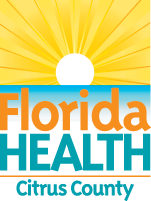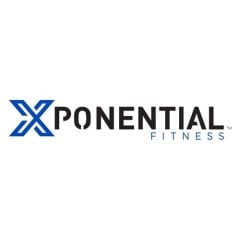Legal scholar and author Cass Sunstein has coined the term sludge to refer to situations in which the design of a specific process consistently impedes individuals from completing their intended action. An enormous amount of sludge exists in health care processes. In this article, three senior managers at Ascension share how they identified four approaches that can help other health systems remove sludge from their processes.
All too often, patients face obstacles that prevent them from efficiently managing their health care. These typically include excessive wait times, redundant and confusing paperwork, and other processes that can be daunting and draining. These mostly administrative burdens act as a “time tax” and can significantly disadvantage our most vulnerable patients by reducing their engagement in tending their own health, often leading to deferred or delayed care. American legal scholar and author Cass Sunstein has coined the term sludge to refer to these types of situations in which the design of a specific process consistently impedes individuals from completing their intended action. We believe that there is significant opportunity to improve health care by focusing more attention on removing sludge. This process has become known as a sludge audit — a systematic approach to identifying the presence and cost of sludge and figuring out how to eliminate it.
In December 2021, President Joseph Biden took steps to address this issue within the federal government by signing an executive order directing agencies to redesign the customer experience to remove sludge. The order describes 36 improvements to be made, including several that focus on health care-related processes: a single, integrated, and fully inclusive digital platform for military veterans to manage their health care and benefits online; the ability for women and children in the Special Supplemental Nutrition Program to shop online rather than in person for groceries to improve access to healthy food; and expanded use of telehealth options for patients to better access health care.
As clinical leaders at Ascension, we began an initiative in June 2021 to apply principles from behavioral science and psychology to improve patient care and employee engagement in our health system. We asked program leaders across the health system to identify opportunities where we could help them increase engagement in order to, for example, boost enrollment in programs or improve uptake of recommended care. An executive steering committee comprising leaders from clinical operations, technology, strategy, innovation, and insurance was created to set priorities. Starting with highest priorities, we, along with clinical and technology stakeholders, conducted sludge audits to determine whether each component of a given program likely facilitated the process or was sludge that impeded it. When possible, the costs of sludge were calculated both financially and in terms of impact on engagement. Once the audit was completed, we made recommendations to those stakeholders on how to reduce sludge and then helped implement them.
Since the initiative’s inception, it has helped reduce sludge in several clinical programs and health insurance plans. Our efforts are continuing, but we have already identified four approaches that can help other health systems improve their processes.
1. Reduce the Number of Steps
When a new program to help engage a population in managing their health has been implemented falls short of expectations, resist the temptation to immediately add a new component such as additional communications or personnel to the old approach. Instead, first explore whether the problem is there are too many steps in the existing process.
Ascension discovered this need when employees were asked to submit a copy of their Covid-19 vaccine cards. The initial approach relied on uploading documentation from a computer. This meant that most employees would have to take a picture of their vaccination card with their phone, email it to themselves, download it from their email to their computer, and then upload it to Ascension’s system. Because of these extra steps, many employees who were vaccinated did not upload their documentation. Our response was to create a new process that enabled associates to directly upload their vaccine card from photos on their smartphone. With this change, the number of vaccine cards uploaded doubled in the first week after implementation.
2. Add a Digital Option
When the initial step in a process depends on a telephone conversation, it can often create a bottleneck. A process that relies solely on verbal communication by telephone requires manual effort from personnel and often leads to excessive waiting (e.g., from being on hold or playing phone tag). In many cases, the remedy involves introducing a more automated digital channel and making it the primary option.
For example, at Ascension, our employee health plan made a change to its primary prescription coverage that required most members to update their information and enroll in a new pharmacy or risk paying more out of pocket for medications. The initial process asked members to call in to update their information, but uptake was low. So, our pharmacy benefits team began placing outbound calls. But the process was personnel intensive, and team members were often unable to connect with members by phone. Some employees didn’t answer; others had out-of-date phone numbers in the system. For every 1,000 phone calls made about 100 members enrolled — a 10% conversion rate.
To address this problem, we conducted a pilot: We selected about 1,000 members and sent them an email with an embedded form that could be edited and submitted. The form was prefilled with information we had collected previously such as their name and contact information. This meant that if the data we had was already correct, those members did not have to re-enter it. Within just one week, the conversion rate jumped to 72%. Ascension has since created an online form that health plan members preferring a digital process can access anytime.
3. Remove Roadblocks
Patients are often asked to complete a set of forms before they can schedule an appointment or access health care. But all too often documents unrelated to the visit are added to the bundle, overwhelming patients and causing them to put off scheduling appointments. Removing these unnecessary roadblocks should lead to greater access to care.
Ascension is in the process of trying to do this in its online method for collecting patient-reported outcomes for joint replacement surgery. Patients will be sent an email or text message with a link to complete a short survey on their health and mobility. Before we email or text patients about health information, we will obtain their consent to receive communications through these channels. But because trying to obtain consent would create a roadblock for patients who need to access care and these forms of communication are not needed for the initial evaluation of the patient by the surgeon, we decided to reach out to patients only after they are scheduled for surgery. They will then receive a text message or email that provides a link to the consent form and asks them to accept or decline it. If they provide consent, they will immediately receive a text message with a link to complete a survey on their health and mobility. After their surgery, patients will be contacted every three months for one year for updates.
4. Offer Virtual Options
To expand access to care health care systems should look for opportunities to replace processes that require in-person visits with virtual options. Many patients have to take an entire day off from work or find childcare in order to travel to an appointment with a clinician for a visit that might require only 15 minutes of actual conversation. While some health care engagements such as a physical examination of the heart and lungs, minor procedures such as a skin biopsy, or the administration of vaccines and intravenous medications do require in-person interactions, many others such as medication counseling, diabetes management, or interpretation of test results do not; these could be completed in a fraction of the patient’s time through a virtual visit.
There are many opportunities to improve the delivery of health care by removing sludge. Doing so will make health care easier for patients to access and manage.








